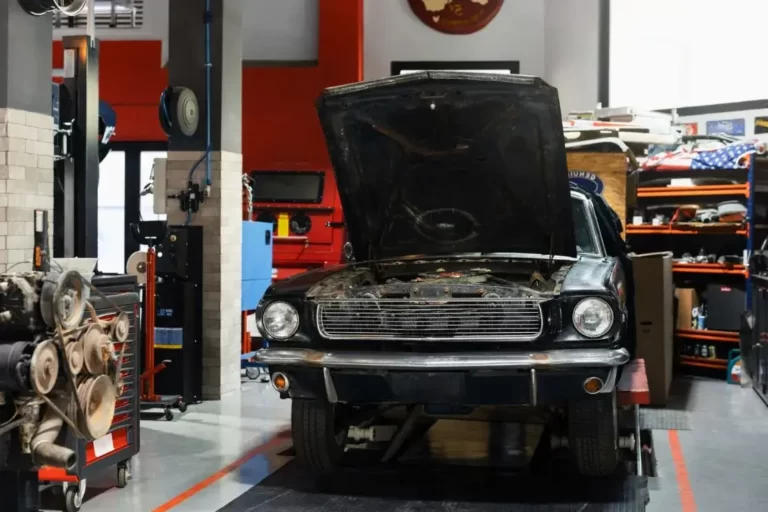How To Check Tyre Age Australia
Tyres are a crucial component of any vehicle, and their maintenance is essential for the safety of drivers. And because of this, it is important for every driver to understand how to check tyre age in Australia.
This article will provide an overview of the relevant legislation and guidelines governing tyre age in Australia and offer advice on properly inspecting tyres for signs of wear and tear.
Additionally, this article will discuss methods for determining when tyres should be replaced due to age-related issues. Automotive safety and maintenance experts have verified all information provided here.
Overview Of Tyre Age Regulations In Australia
The safety of tyres on Australian roads is strictly regulated and enforced. Regular inspections of tyre age are essential to ensure optimal performance and stability of vehicles. Tyre age can be determined by the DOT number printed on the tyre, which consists of four digits. The first two digits represent the week the tyre was made, and the last two digits indicate the year of production.
While no specific law regulates the maximum age of a tyre in Australia, it is recommended that tyres be replaced after ten years, regardless of appearance, mileage, or actual wear. For tyres older than five years, it is advisable to have them inspected by a qualified expert at least once a year.
Tyres must have a minimum tread depth of 1.5mm in all top grooves and must be of a type certified for everyday road use. Any modifications or tampering affecting tyre safety or compliance are strictly prohibited. Replacing tyres over 6-10 years old, even if not used, is also recommended, as rubber deteriorates over time during storage.
Therefore, adequate maintenance and care must be considered when inspecting vehicles to remain compliant with Australian regulations for roadworthy vehicles. This ensures driver safety and reduces the risk of accidents caused by old or damaged tyres.
Assessing Tyre Tread Depth
Evaluating tyre tread depth is crucial for maintaining your vehicle’s safety and efficiency. Tread patterns provide traction on wet surfaces, disperse water to prevent aquaplaning, absorb impacts from road debris, and increase tyre lifespan by reducing heat build-up. Inspect your tyres every two weeks for signs of wear and tear.
Check for visible sidewall cracks, which may indicate issues with construction quality or tyre age. Also, compare groove depths to original specifications to determine insufficient remaining tread depth.
Further inspections should occur after tyre rotation to identify wear pattern discrepancies that may require balancing adjustments or replacements.
Maintaining proper routines will extend tyre lifespan and promote safer driving conditions on Australia’s roads. Regularly checking tread depths and adhering to rotation schedules can optimise performance while saving money on emergency repairs or replacements.
Identifying Visible Damage And Wear
Tyre care is crucial for automotive safety and maintenance. Conduct a visual inspection at least once every few weeks. Assessing tread depth involves identifying visible damage or wear on the tyre.
Examine potential damage in sidewalls, lugs, and valve stems/caps, and wheels. Sidewall cracks warrant immediate attention and possible replacement. Ensure lug nuts are free from excessive wear, rust, or looseness to maintain proper wheel torque.
Inspect valve stems/caps for leakage or corrosion, as they must remain firmly attached to maintain air pressure. Finally, examine the overall condition of tyres and wheels to ensure they’re free from deformities that could impact performance and safety.
Regularly assessing your tyres for typical wear and damage indicators is vital for road safety. Proper maintenance can significantly improve traction control and reduce risks, such as blowouts caused by undetected tyre integrity issues.
Checking Tyre Pressure
Proper tyre pressure is crucial for vehicle safety and fuel efficiency. The most common method of checking tyre pressure is with a gauge. Monitoring systems alert drivers when tyre pressure drops below a predetermined level. Tyre wear indicators indicate when a tyre should be replaced.
Check tyre pressure gauges monthly and after long-distance travel. Regularly inspect tyre wear indicators to ensure sufficient tread depth.
Tyre Pressure Gauges
A tyre pressure gauge is critical for checking tyre pressure in Australia. It measures air pressure and identifies wear or puncture issues. It also enables inflation level adjustments for optimal performance and safety. Regular tyre rotation and balancing help ensure even wear and extend the life of each tyre.
Professionals should conduct detailed inspections using specialised equipment like wheel balancers and torque wrenches. Using the right tools correctly is vital for routine maintenance, optimal roadworthiness, and operational efficiency.
Tyre Pressure Monitoring Systems
Tyre Pressure Monitoring Systems (TPMS) provide real-time feedback on air pressure levels and alert drivers when inflation falls below a certain threshold. TPMS allows for quicker responses to issues with wear or punctures and helps drivers avoid overinflating their tyres.
It is also essential for commercial vehicle drivers where additional weight increases the risk of severe accidents due to unevenly distributed pressures across all tyres. Investing in reliable TPMS ensures monitoring with ease and confidence.
Tyre Wear Indicators
Tyre maintenance is essential for vehicle safety, including regular pressure checks and the use of TPMS. Tyre Wear Indicators (TWI) determine a tyre’s overall condition, age, life expectancy, and potential worn areas. TWI provides additional protection for those without access to TPMS.
Understanding when to replace tyres before visible signs of wear appear improves safety on the road. Technological advancements provide drivers with the necessary information to protect themselves and others from potential harm due to poor tyre maintenance practices.
Factors That Can Affect Tyre Age
The age of a tyre is crucial for evaluating its safety and performance. Various factors, including weather and storage conditions, can influence tyre age. Aged tyres may fail and lead to hazardous driving situations.
Extreme weather conditions like heat or cold can accelerate tyre ageing. In hot climates, the treads wear out faster due to higher temperatures. At the same time, colder regions experience frequent breaks in road surfaces due to snow, ice and frost heaving. Both scenarios can result in premature tyre ageing if not addressed adequately.
Storage conditions are also vital in maintaining optimal tyre lifespan. Tyres exposed to sunlight degrade faster than those stored indoors. Additionally, keeping tyres with dirt or grit can increase their chances of degradation due to abrasion from these materials during use. Therefore, it is recommended to store tyres indoors, if possible, to minimise potential damage.
To maintain tyre health throughout their lifespan, motorists should understand the various factors affecting tyre age. Regular inspections and maintenance activities should be performed diligently, irrespective of weather or storage conditions.
Knowing When To Replace Tyres
As an automotive safety and maintenance expert, understanding tyre age is crucial. In Australia, seasonal conditions and climate changes must be considered when determining whether tyres must be replaced.
A quick inspection can identify signs of wear and tear on the treads or sidewalls. Still, a detailed analysis can be conducted by a qualified mechanic with specialist equipment for testing tyre performance.
The most effective way to determine tyre age is to look at the manufacturing date, which appears as four digits stamped onto the sidewall. This shows how long ago the tyre was made – with ‘1’ indicating 2011, ‘2’ meaning 2012, and so on, until 2021, when ‘0’ shows 2020 manufacture.
Tyres typically lose performance six years after the manufacture date, so if any issues are noticed before then, they should be inspected sooner rather than later.
Investing in new tyres ensures safe driving and reduces fuel consumption and air pollution due to improved rolling resistance, both of which benefit society. Therefore, knowing tyre age is essential in maintaining roadworthiness and protecting the environment.
Conclusion
In conclusion, understanding tyre age regulations in Australia and regularly assessing the condition of your tyres is vital. This includes checking tread depth for signs of wear and visible damage and ensuring tyre pressure is within specifications. It is worth noting that storage conditions can also affect tyre lifespan.
If any signs of significant age or wear are present, new tyres should be considered. Regularly monitoring tyre conditions helps to stay safe on the roads and minimise risk to oneself and other road users.
Frequently Asked Questions
Q: How can I check the age of my tyres?
A: You can check the age of your tyres by looking for the tyre manufacture date, which is stamped on its sidewall.
Q: Where can I find the tyre manufacture date?
A: The tyre manufacture date is usually on the tyre’s sidewall.
Q: What does the sidewall of my tyre tell me?
A: The sidewall of your tyre contains essential information about the tyre, including the date of manufacture, tyre size, and the tyre manufacturer.
Q: How old are my tyres if they still need a manufacture date?
A: If your tyres don’t have a visible manufacture date, it’s likely that they were manufactured before 2000. In this case, it’s important to have them inspected by a tyre specialist to check for signs of wear and tear.
Q: Can I tell the age of my tyres by the tread depth?
A: No, the tread depth of your tyres cannot tell you how old they are. A tyre can have plenty of treads left but still, be old and unsafe.
Q: How old is too old for a tyre?
A: Tyres should be replaced if they are more than five years old or have been used for more than six years, regardless of their tread depth.
Q: How do I know when my spare tyre needs to be replaced?
A: Spare tyres don’t usually have a manufacture date stamped on them, so it’s important to have them inspected by a tyre specialist to check for signs of wear and tear.
Q: What is the DOT code, and how can I use it to check my tyre age?
A: The DOT code is a four-digit code stamped on the sidewall of your tyre. The last four digits of this code tell you the week and year the tyre was manufactured.
Q: Why is it important to check the age of my tyres?
A: It’s essential to know how old your tyres are because old tyres are more prone to failure and can be unsafe to use. Checking the age of your tyres can help you stay safe on the road.
Q: What should I do if I can’t find the manufacture date on my tyre?
A: If you need help finding the manufacture date on your tyre, try checking the other tyres on your vehicle. If you still need help finding the date, consult with a tyre specialist to determine the age of your tyres.






